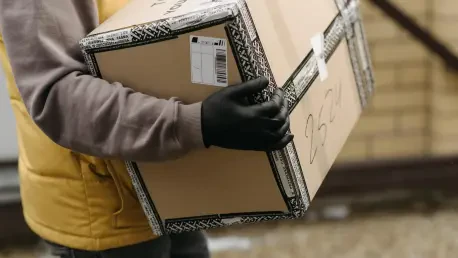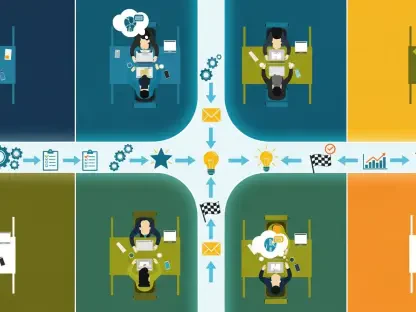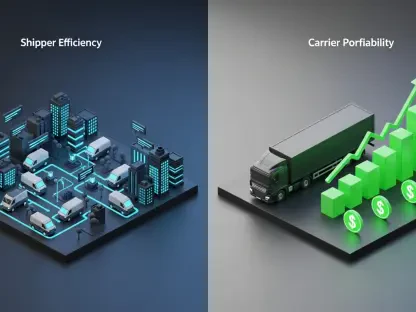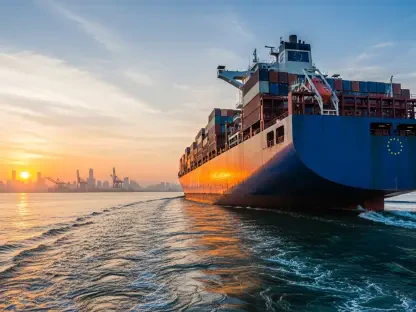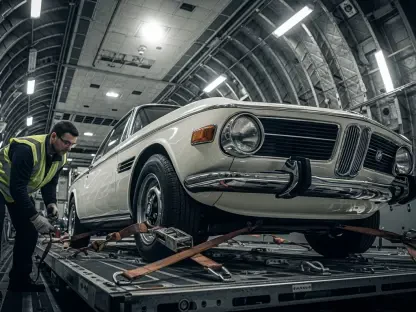I’m thrilled to sit down with Marco Gaietti, a veteran in business management with decades of experience in strategic operations and customer relations. Marco has a deep understanding of logistics and supply chain dynamics, particularly in the rapidly evolving area of last-mile delivery. In this conversation, we dive into the critical role of the last mile in shaping customer experiences, the challenges of outdated manual processes, and the transformative power of automation technologies. We also explore real-world success stories and the strategic advantages of digitizing delivery operations. Let’s get started.
How does last-mile delivery define the current logistics landscape, especially in terms of customer experience?
Last-mile delivery is really the make-or-break moment in logistics today. It’s the final touchpoint with the customer, so it directly shapes their perception of a brand. A smooth, timely delivery can turn a one-time buyer into a loyal customer, while delays or mix-ups can damage trust instantly. It’s not just about getting a package to the door; it’s about meeting expectations for speed, transparency, and reliability that customers now demand, especially with the rise of e-commerce.
Why do you think the last mile is so crucial for operational success in modern supply chains?
Operationally, the last mile is often the most expensive and complex part of the supply chain. It accounts for a significant chunk of total delivery costs because of the fragmented nature of urban routes, traffic issues, and the need for precision. If you get it right, you optimize costs and build efficiency across the network. If you don’t, inefficiencies pile up, leading to higher expenses and missed opportunities to scale.
What are some of the biggest hurdles organizations face with last-mile delivery today?
The challenges are multifaceted. You’ve got rising customer expectations for same-day or even two-hour deliveries, which puts immense pressure on logistics teams. Then there’s the issue of urban congestion, unpredictable weather, and labor shortages. On top of that, many companies are still stuck using outdated systems that can’t keep up with the volume or complexity of modern delivery demands, leading to constant firefighting rather than strategic planning.
How do manual or paper-based processes specifically contribute to inefficiencies in this space?
Manual processes are a major bottleneck. When you rely on paper logs or spreadsheets, there’s no real-time visibility into where a delivery is or what’s gone wrong. Drivers might be using inefficient routes because there’s no dynamic optimization, and managers can’t adjust on the fly. It slows everything down, increases fuel costs, and creates a ripple effect of delays across the entire operation.
Can you describe a common error or blind spot that often arises from sticking to these outdated methods?
One frequent issue is mismatched delivery data. For instance, a driver might mark a package as delivered on paper, but the customer never received it. Without digital tracking, there’s no way to verify what happened or where the breakdown occurred. This kind of blind spot leads to customer complaints, costly re-deliveries, and a hit to the company’s reputation.
In what ways is automation transforming the last-mile delivery process?
Automation is a game-changer. Technologies like route optimization software, electronic proof of delivery, and GPS tracking are streamlining operations. They allow companies to plan smarter routes, reduce unnecessary miles, and provide real-time updates to both drivers and customers. It’s about cutting waste—whether that’s time, fuel, or resources—and delivering a more predictable, reliable service.
How does adopting automation translate into cost savings and better customer satisfaction?
On the cost side, automation reduces fuel usage by optimizing routes and cuts down on labor hours spent on manual tasks like paperwork. It also minimizes errors, so there are fewer returns or re-deliveries. For customers, automation means transparency—they can track their package in real time and get accurate ETAs. That builds trust and satisfaction, which often translates into repeat business.
What are the dangers of continuing to rely on manual processes in last-mile logistics?
The risks are significant. Manual processes are prone to human error, whether it’s a misread address or a lost delivery slip. These mistakes can snowball into major disruptions—think delayed shipments or angry customers. Over time, this erodes both profitability and brand loyalty. Companies that don’t adapt risk falling behind competitors who are leveraging technology to deliver faster and more reliably.
How does digitization improve visibility and accountability in delivery operations?
Digitization brings everything into the open. With digital platforms, you can track every step of the delivery process in real time—from dispatch to doorstep. Managers know exactly where drivers are, and customers get updates instantly. It also creates a clear record of accountability; if something goes wrong, you can pinpoint the issue and address it quickly, rather than guessing based on incomplete paper trails.
Can you share a success story of a company that saw major improvements after adopting automation in last-mile delivery?
Absolutely. I worked with a mid-sized retailer a few years back that struggled with high delivery costs and frequent customer complaints. After implementing an automated route optimization system and digital proof of delivery, they cut their fuel costs by nearly 20% in the first year. More importantly, their on-time delivery rate jumped from 75% to over 90%, which led to a noticeable uptick in customer reviews and repeat orders. The transition wasn’t seamless—they had to train staff and overcome initial resistance—but the results spoke for themselves.
What lessons can other businesses learn from organizations that have successfully digitized their last-mile operations?
One key lesson is to start small and scale up. Don’t try to overhaul everything at once; pilot a digital solution in one region or with a small fleet to iron out kinks. Also, invest in training—technology is only as good as the people using it. Finally, focus on communication with customers. When they see real-time updates and experience fewer delays, their trust in your brand grows, and that’s a competitive edge.
What is your forecast for the future of automation in last-mile delivery?
I believe we’re just scratching the surface. Over the next decade, I expect to see even more integration of AI and machine learning to predict delivery windows with pinpoint accuracy. We’ll also likely see broader adoption of drones and autonomous vehicles, especially in urban areas, to tackle congestion and labor challenges. The focus will shift toward sustainability as well, with automation helping companies reduce their carbon footprint. It’s an exciting time, and businesses that embrace these innovations early will be the ones leading the pack.
